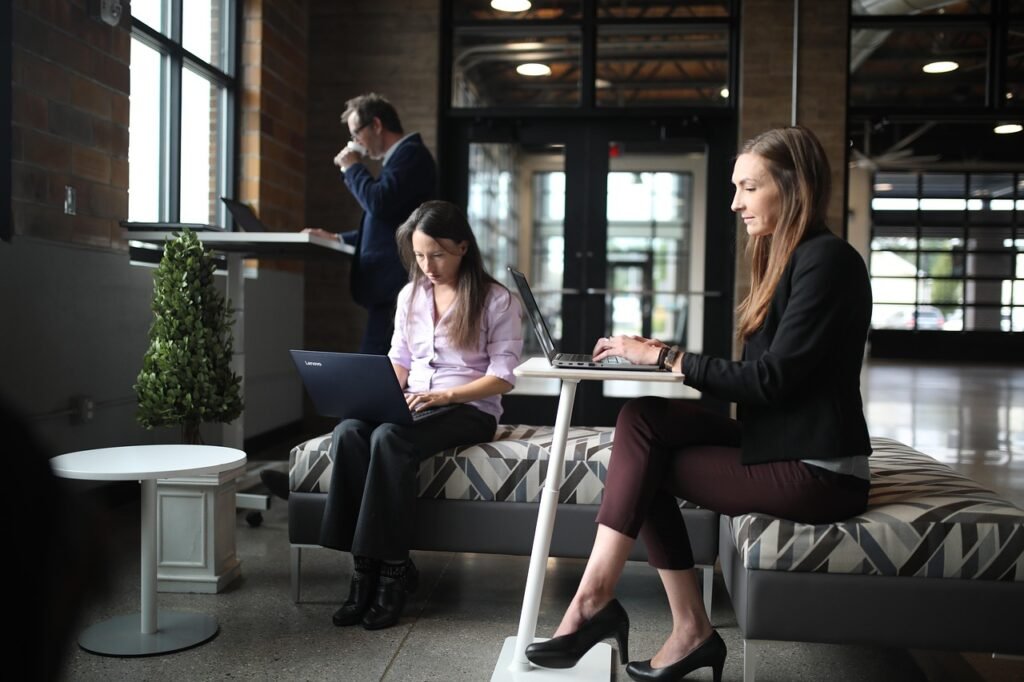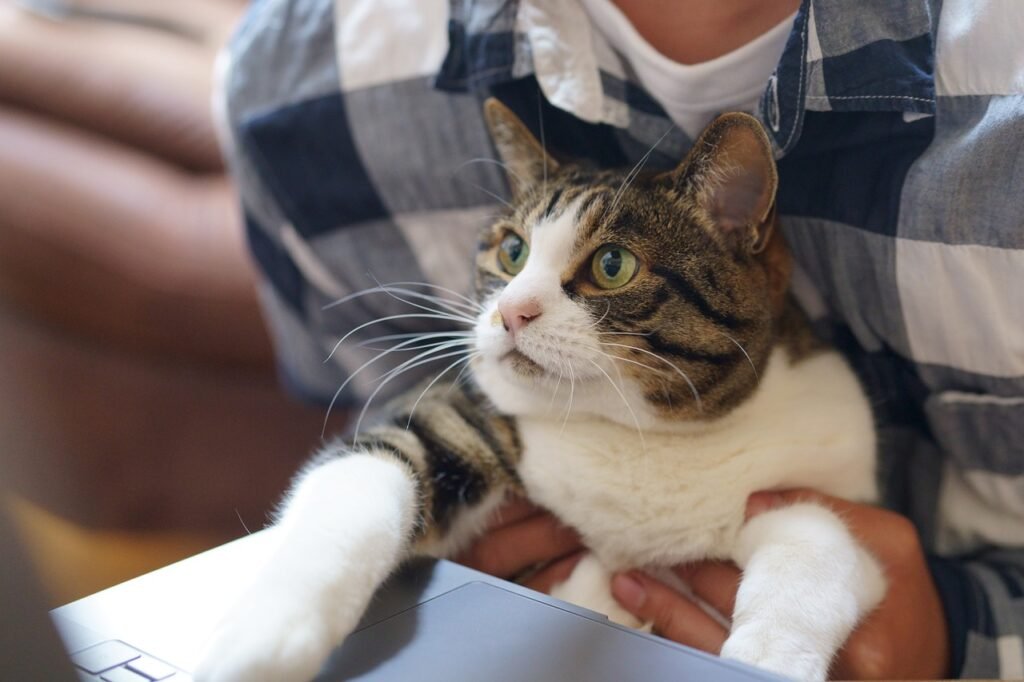
Introduction to Remote Creativity
Remote work is no longer just a temporary solution; it’s a life-changing shift in how we conduct business.
This shift brings both challenges and exciting possibilities, especially when it comes to fostering creativity.
In an office setting, creative energy often flows naturally through spontaneous interactions and collaborative efforts.
However, translating this dynamic into a virtual environment requires intentional strategies and tools.
Remote teams must adapt to new ways of sparking innovation and maintaining creative momentum.
One of the most significant factors is the use of digital tools designed to enhance virtual collaboration.
These tools can range from project management software that keeps everyone on the same page to digital whiteboards that facilitate interactive brainstorming sessions.
Leveraging these tools effectively can transform remote work from a potential barrier into a catalyst for creative breakthroughs.
Another crucial element is fostering an open and inclusive virtual environment.
In a remote setting, it can be easy for team members to feel isolated or disconnected.
Encouraging regular communication, whether through scheduled meetings or casual check-ins, helps build a sense of community and belonging.
This, in turn, fosters a more open exchange of ideas and fuels creativity.
The flexibility inherent in remote work can also be a significant advantage.
Employees are often more productive and creative when they have the freedom to work during their most productive hours.
By embracing flexible schedules, companies can tap into the natural rhythms of their employees, leading to higher quality work and more innovative ideas.
Finally, remote work allows for a broader range of perspectives.
Teams can be composed of individuals from different geographical locations, bringing diverse viewpoints and experiences to the table.
This diversity can be a powerful driver of creativity, as it encourages out-of-the-box thinking and novel solutions to problems.
By focusing on these aspects, remote work can become a fertile ground for creativity, leading to innovations that might never have emerged in a traditional office setting.
Creating a Supportive Environment

A supportive environment is crucial for cultivating creativity within remote teams.
Encouraging open communication among team members can dramatically boost productivity.
In fact, 70% of employees believe that engagement in the workplace enhances productivity and saves time.
Providing access to tools and resources that spark creative ideas further contributes to a thriving virtual workspace.
Whether it’s brainstorming software, access to educational platforms, or creative design tools, investing in the right resources can ignite inspiration.
Making sure that employees feel heard and valued is another cornerstone of a supportive remote environment.
Encouraging regular feedback sessions where team members can voice their opinions and suggestions fosters a culture of mutual respect and continuous improvement.
This practice not only aids in identifying potential areas for innovation but also empowers employees to take ownership of their work.
Additionally, it’s important to establish clear guidelines and expectations to prevent any misunderstandings that might arise from remote communication.
Transparent communication channels and well-defined roles help team members understand their responsibilities, which can reduce stress and free up mental space for creative thinking.
Investing in mental health and well-being programs can also play a pivotal role in creating a supportive environment.
Remote work can sometimes blur the lines between professional and personal life, leading to burnout.
Providing resources such as virtual wellness workshops or access to counseling services can help team members maintain a healthy work-life balance, thus keeping their creative energies high.
Another effective approach is to foster a culture of recognition and appreciation.
Celebrating individual and team achievements, no matter how small, can boost morale and motivate employees to continue pushing creative boundaries.
Whether it’s a shout-out in a team meeting or a more formal recognition program, showing appreciation can go a long way in maintaining a positive and productive remote work environment.
Encouraging social interactions outside of work-related tasks can also enhance team cohesion and creativity.
Virtual coffee breaks, game sessions, or informal chats can help build stronger relationships among team members, making collaboration smoother and more effective.
Scheduling Regular Brainstorming Sessions

Regular brainstorming sessions are essential for sparking fresh ideas and ensuring every team member’s creativity is harnessed.
Virtual meetings dedicated exclusively to idea generation can lead to a wealth of diverse perspectives and innovative solutions.
By involving team members from various departments, the creative process becomes enriched, encouraging cross-pollination of ideas that might not emerge in isolated settings.
To make these sessions effective, it’s important to set a clear agenda and establish a structured yet flexible format.
Start with an icebreaker to set a relaxed tone, allowing participants to feel comfortable and open to sharing.
Use digital tools like virtual whiteboards or mind-mapping software to visualize ideas in real-time, making it easier to build on each other’s thoughts.
Encourage an open and judgment-free environment where all contributions are valued, no matter how unconventional they may seem.
This approach fosters a sense of psychological safety, empowering team members to voice their boldest ideas without fear of criticism.
Rotating the role of session facilitator can also provide fresh perspectives and keep the energy dynamic.
Time management is crucial. Allocate specific time slots for different stages of the brainstorming process, from idea generation to discussion and refinement.
This ensures that the session remains focused and productive, preventing it from veering off course.
Encourage team members to do some pre-session thinking and come prepared with initial ideas, which can help jump-start the discussion.
Incorporating occasional guest speakers or external experts can provide new insights and stimulate creative thinking.
These external voices can challenge the team’s assumptions and introduce novel concepts that may not have been considered otherwise.
Additionally, follow-up is key.
Document the ideas generated during the session and share them with the team for further reflection.
Assign actionable items to keep the momentum going and turn those innovative ideas into reality.
Regularly revisiting and iterating on these ideas can lead to continuous improvement and sustained creativity.
By fostering a structured yet flexible approach to brainstorming, remote teams can unlock a wealth of creative potential, driving innovation and achieving remarkable outcomes.
Promoting Flexibility in Work Schedules

Offering flexible schedules is one of the major advantages of remote work, enabling employees to tailor their work hours to when they are most productive.
This flexibility can significantly boost creativity and overall job satisfaction.
However, it’s important to address the challenges that come with this flexibility.
28% of workers have reported experiencing a higher workload while working remotely.
To counteract these challenges, it’s crucial to promote a healthy work-life balance.
Encourage employees to take breaks and set boundaries between their work and personal lives.
Offering resources like time management workshops can equip team members with the skills they need to handle their flexible schedules effectively.
Implementing a results-oriented approach rather than focusing strictly on hours worked can also help.
This method allows employees to complete their tasks at times that suit them best, without the pressure of a traditional 9-to-5 schedule.
Trusting your team to manage their own time can lead to higher levels of innovation and creativity as employees feel more in control of their work environment.
Regular check-ins and updates can ensure that everyone remains aligned and on track.
These check-ins don’t have to be lengthy; even short, focused meetings can be highly effective in maintaining team cohesion.
Tools for project management and communication can further streamline these processes, making it easier to keep everyone on the same page.
Additionally, consider implementing flexible meeting times to accommodate different time zones and personal schedules.
This inclusivity ensures that all team members, regardless of their location, can participate fully in collaborative efforts, thus harnessing a wide range of creative inputs.
By offering this level of flexibility and support, companies can create an environment where employees feel empowered and motivated to bring their best, most creative selves to their work.
This approach not only fosters creativity but also builds a more engaged and productive remote team.
Utilizing Digital Collaboration Tools

Digital collaboration tools have revolutionized how remote teams operate, making it easier to communicate and collaborate effectively.
Interestingly, 80% of employees believe that remote work collaboration surpasses in-person collaboration.
Tools like virtual whiteboards and mind-mapping software can significantly enhance brainstorming sessions.
These platforms allow team members to visually map out ideas, making it easier to see connections and build on each other’s thoughts in real-time.
Additionally, “digital workplaces and online collaboration software can boost productivity by up to 30%.”
Beyond brainstorming, these tools also streamline project management.
Platforms like Trello or Asana enable teams to track tasks, set deadlines, and monitor progress, ensuring everyone remains aligned and on schedule.
Video conferencing software such as Zoom or Microsoft Teams facilitates face-to-face interactions, fostering a sense of connection and immediacy, despite physical distances.
Real-time communication is another critical component.
Tools like Slack or Microsoft Teams offer instant messaging capabilities that keep the conversation flowing, whether it’s for quick updates or in-depth discussions.
Integrating these platforms with other tools, such as Google Drive for file sharing or GitHub for code management, creates a seamless workflow that enhances efficiency.
Incorporating social features into these digital tools can also bolster team cohesion.
Channels for non-work-related chats, virtual coffee breaks, or even online game sessions can replicate the casual interactions that often spark creativity in a physical office.
Security is another consideration.
Ensuring that these digital platforms have robust security measures in place protects sensitive information and gives team members peace of mind, allowing them to focus on their creative tasks without concern for data breaches.
By leveraging these advanced digital tools, remote teams can not only maintain but potentially exceed the levels of creativity and collaboration found in traditional office settings.
Providing Opportunities for Skill Development

The remote work landscape is ripe for continuous learning and development.
By offering online courses, webinars, and workshops, companies can ensure their team members stay at the forefront of industry trends and technologies.
This not only enhances individual skill sets but also enriches the collective expertise of the team.
Encouraging employees to engage in self-directed learning can also be highly beneficial.
Providing access to platforms like Coursera, Udemy, or LinkedIn Learning allows team members to explore topics that interest them, fostering a culture of curiosity and self-improvement.
Supporting certifications and advanced training programs can further deepen their expertise and bring new, innovative ideas into the workplace.
Mentorship programs are another valuable tool.
Pairing less experienced employees with seasoned mentors can facilitate knowledge transfer and provide personalized guidance.
This relationship can be particularly effective in a remote setting, where one-on-one interactions might be less frequent.
Regular check-ins and virtual coffee chats can help maintain these connections and ensure continuous growth.
Hosting virtual skill-sharing sessions can also be a great way to leverage the diverse talents within your team.
Encourage employees to share their knowledge on specific topics, whether it’s coding best practices, design principles, or effective communication strategies.
These sessions can spark new interests and foster a collaborative learning environment.
Additionally, allocating time for personal projects during work hours can stimulate creativity and innovation.
Allowing employees to pursue their passions and experiment with new ideas can lead to unexpected breakthroughs that benefit the entire team.
This approach not only boosts morale but also nurtures a sense of ownership and investment in the company’s success.
Lastly, recognizing and rewarding skill development efforts can motivate team members to continually seek improvement.
Whether it’s through a formal recognition program or simply acknowledging their hard work during team meetings, showing appreciation for their dedication can reinforce a culture of continuous learning.
By integrating these strategies, companies can create a dynamic and enriching environment where employees are empowered to develop their skills, leading to enhanced creativity and innovation across the board.
Fostering a Culture of Experimentation

Embracing a culture of experimentation is key to driving innovation within remote teams.
By encouraging team members to try new approaches and learn from their experiences, you create an environment where creative thinking can thrive.
“Effective workplace collaboration can enhance innovation by 30%.”
Celebrating innovative ideas, regardless of their size, fosters a positive atmosphere where creativity is valued and nurtured.
Acknowledging both successes and the learning that comes from less successful attempts helps remove the fear of failure, empowering employees to take risks and explore new concepts.
Providing a platform for sharing experimental outcomes, whether through virtual meetings, dedicated channels on communication tools, or internal newsletters, can spark further creativity and inspire others.
Highlighting case studies of successful experiments and the lessons learned from them can serve as valuable resources for the entire team.
To support experimentation, it’s crucial to allocate time and resources specifically for creative endeavors.
This might include setting aside dedicated hours each week for team members to work on innovative projects or offering stipends for tools and materials that can aid in their exploratory efforts.
Pairing up team members from different departments or backgrounds for collaborative projects can also yield fresh perspectives and inventive solutions.
Cross-functional collaboration often leads to the discovery of new methods and ideas that might not emerge within more siloed teams.
Encouraging a mindset of continuous improvement can help maintain a culture of experimentation.
Regularly soliciting feedback on processes and projects, and then iterating based on that input, keeps the cycle of innovation ongoing.
This approach ensures that the team remains agile and responsive to new challenges and opportunities.
By fostering an environment where experimentation is encouraged and celebrated, remote teams can unlock new levels of creativity and drive sustained innovation.
Conclusion: Nurturing Creativity Remotely

Nurturing creativity in a remote work environment involves more than just implementing a few new tools or policies; it’s about cultivating a holistic approach that integrates various strategies to support and inspire your team.
Key to this is establishing a culture that values open communication, flexibility, and continuous learning.
Creating a supportive atmosphere where team members feel heard and appreciated is fundamental.
Regular check-ins and feedback sessions can go a long way in ensuring everyone stays connected and engaged.
Celebrating achievements, whether big or small, boosts morale and reinforces a sense of community.
Flexible work schedules allow team members to align their tasks with their peak productivity times, resulting in higher quality output and innovative solutions.
Trusting employees to manage their time effectively promotes a sense of autonomy and can lead to remarkable creative breakthroughs.
Digital collaboration tools have become indispensable, offering platforms for real-time communication, project management, and creative brainstorming.
These tools not only streamline workflows but also foster a more interactive and cohesive team environment.
By integrating features that encourage casual interactions, such as virtual coffee breaks or social channels, teams can replicate the spontaneous exchanges that often spark creativity in a physical office.
Providing ample opportunities for skill development keeps the team at the cutting edge of industry trends.
Whether through online courses, webinars, or internal skill-sharing sessions, fostering a culture of continuous learning ensures that the team is always evolving and bringing fresh ideas to the table.
Promoting a culture of experimentation encourages team members to explore new concepts without fear of failure.
Allocating time and resources for innovative projects and celebrating both successes and learning experiences can inspire bold, creative thinking.
Cross-functional collaboration can also lead to novel solutions, as diverse perspectives often yield the most innovative ideas.
By weaving these elements together, companies can create a dynamic and nurturing remote work environment that not only sustains but enhances creativity.
This comprehensive approach ensures that teams remain motivated, innovative, and ready to tackle any challenges that come their way.
